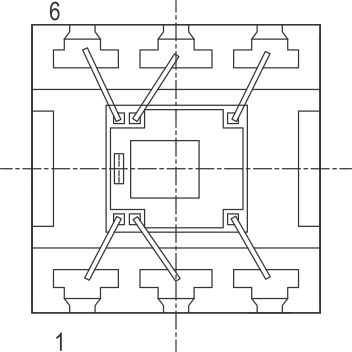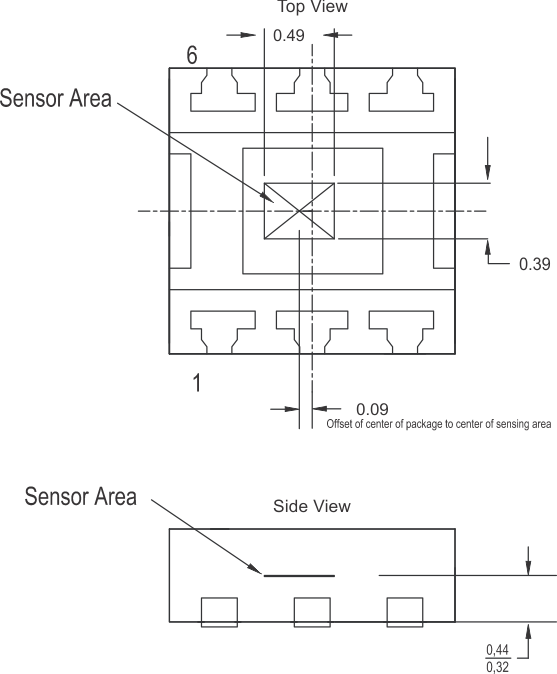SBOS745A May 2016 – June 2016 OPT3002
PRODUCTION DATA.
- 1 Features
- 2 Applications
- 3 Description
- 4 Revision History
- 5 Pin Configuration and Functions
- 6 Specifications
- 7 Detailed Description
- 8 Application and Implementation
- 9 Power-Supply Recommendations
- 10Layout
- 11Device and Documentation Support
- 12Mechanical, Packaging, and Orderable Information
Package Options
Mechanical Data (Package|Pins)
- DNP|6
Thermal pad, mechanical data (Package|Pins)
Orderable Information
12 Mechanical, Packaging, and Orderable Information
The following pages include mechanical packaging and orderable information. This information is the most current data available for the designated devices. This data is subject to change without notice and revision of this document. For browser-based versions of this data sheet, refer to the left-hand navigation.
12.1 Soldering and Handling Recommendations
The OPT3002 is qualified for three soldering reflow operations as per JEDEC JSTD-020.
Note that excessive heat can discolor the device and affect optical performance.
See application report QFN/SON PCB Attachment for details on the soldering thermal profile and other information. If the OPT3002 must be removed from a PCB, discard the device and do not reattach.
As with most optical devices, handle the OPT3002 with special care to ensure optical surfaces stay clean and free from damage. See the Do's and Don'ts section for more detailed recommendations. For best optical performance, solder flux and any other possible debris must be cleaned after soldering processes.
12.2 DNP (S-PDSO-N6) Mechanical Drawings
 Figure 25. Package Orientation Visual Reference of Pin 1
Figure 25. Package Orientation Visual Reference of Pin 1(Top View)
 Figure 26. Mechanical Outline Showing Sensing Area Location
Figure 26. Mechanical Outline Showing Sensing Area Location(Top and Side Views)